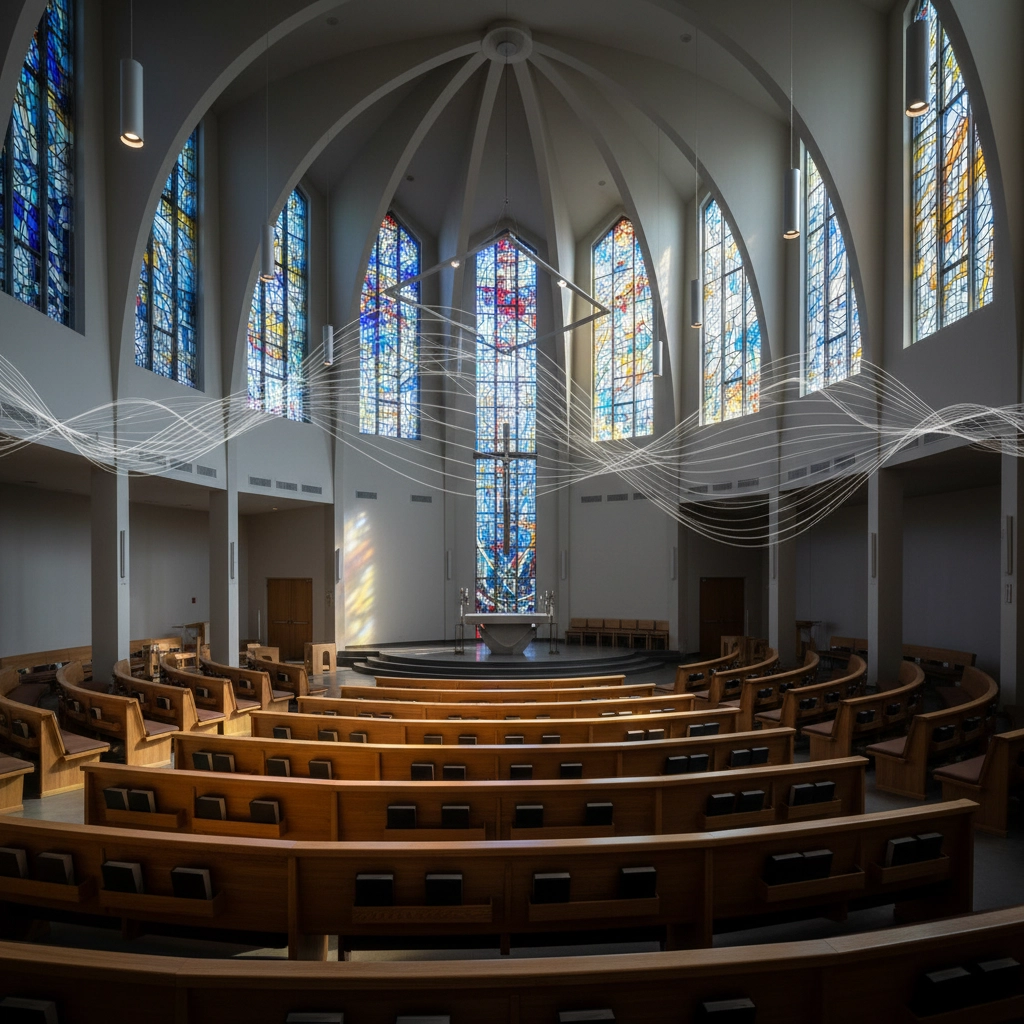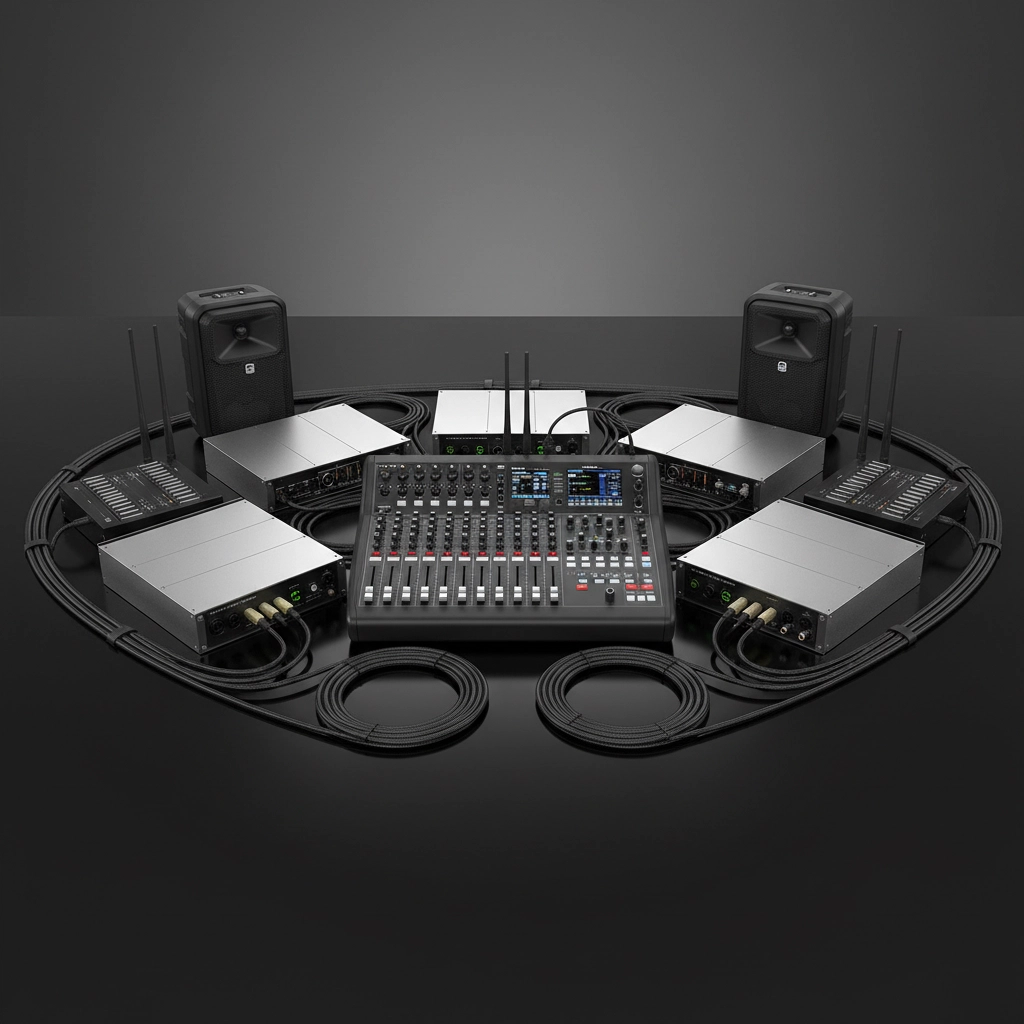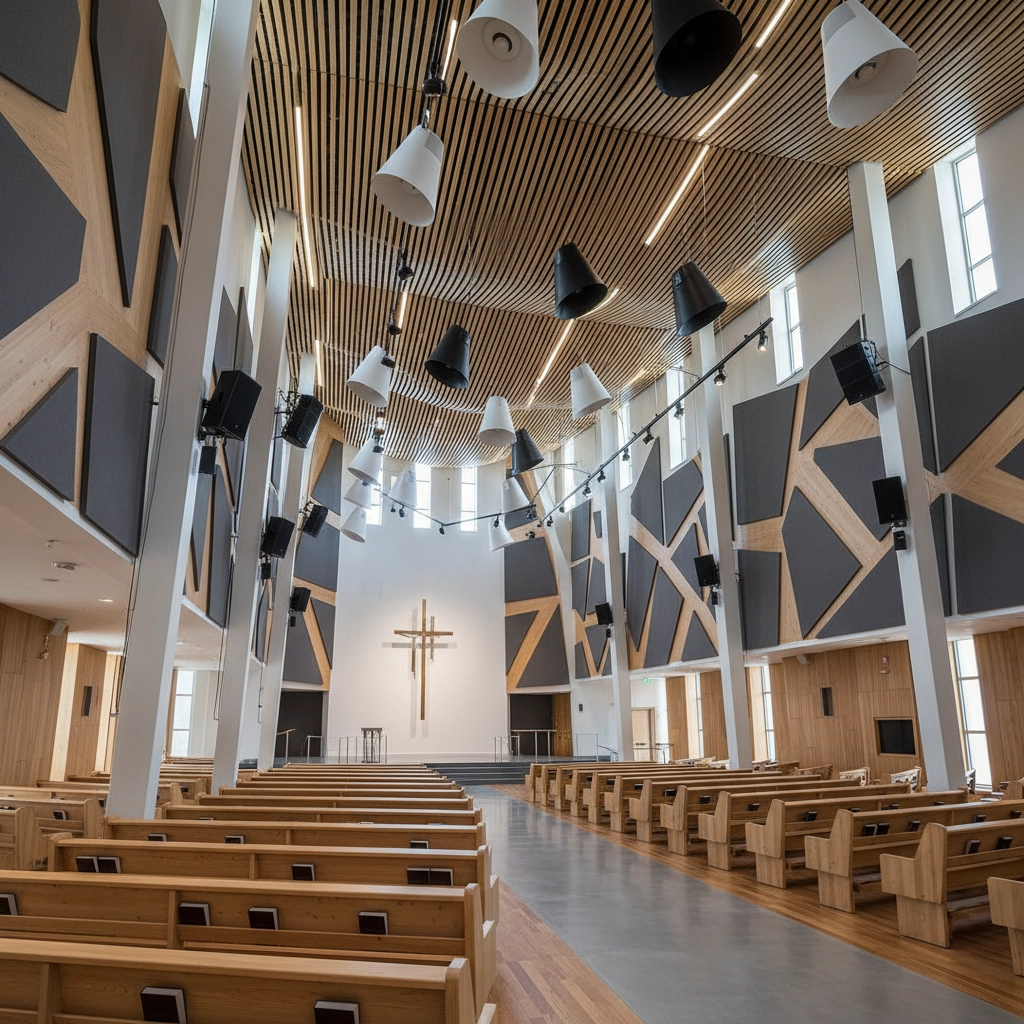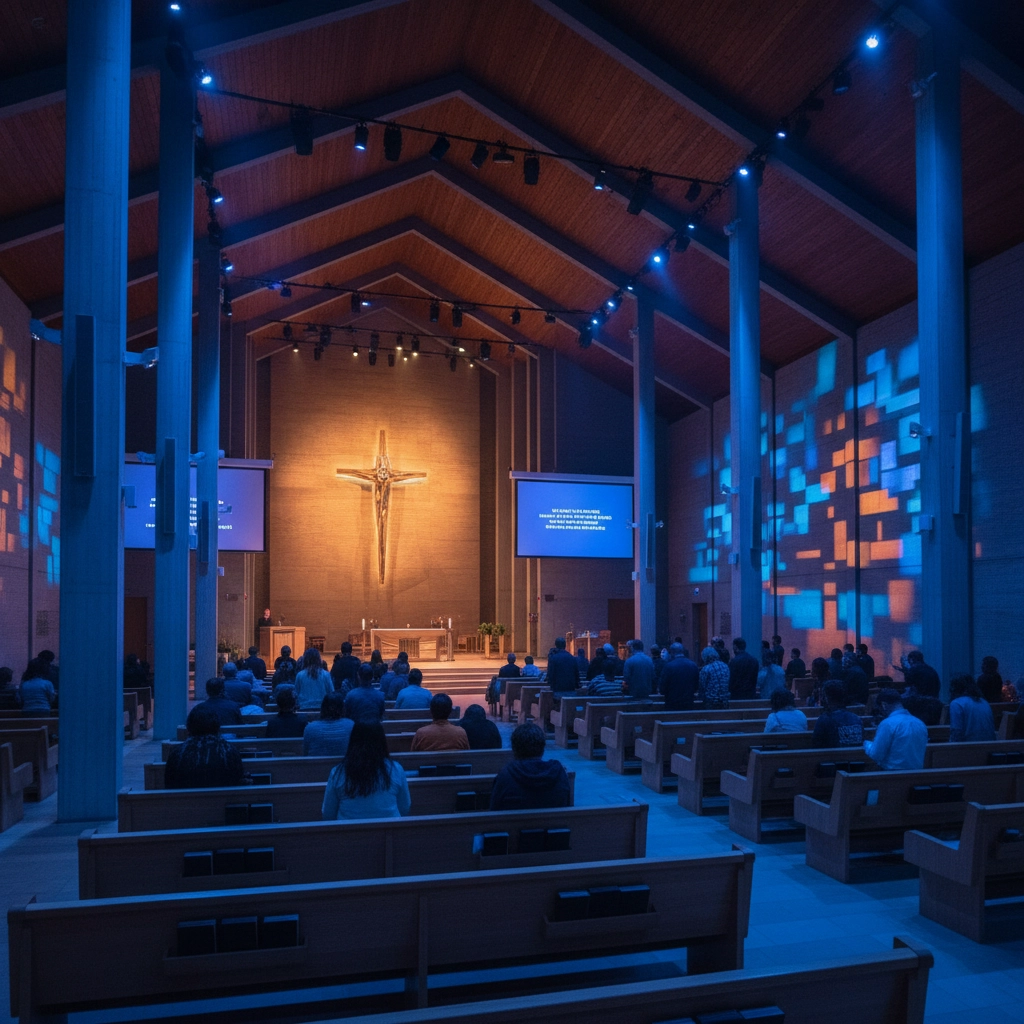Step-by-Step Guide to Setting Up a Flexible AV System for Faith Communities
- davidau
- Sep 22
- 5 min read
Setting up an audiovisual system for your faith community doesn't have to feel overwhelming. Whether you're starting from scratch or upgrading an existing setup, the key is creating a flexible system that adapts to your diverse needs: from intimate prayer meetings to packed holiday services, community events to live streaming.
Let's walk through this step-by-step, so you can build an AV system that serves your ministry for years to come.
Step 1: Assess Your Space and Needs
Before you buy a single piece of equipment, take time to really understand what you're working with. Walk around your sanctuary, fellowship hall, or multipurpose space during different times of day. Notice how natural light affects visibility, where sound seems to bounce or get absorbed, and what sight lines look like from every seat.
Consider the variety of events you host throughout the year. Do you have traditional worship services with organ music? Contemporary services with full bands? Community meetings? Wedding ceremonies? Each of these requires different AV capabilities, and a flexible system should handle them all seamlessly.

Measure your space carefully: ceiling height, room dimensions, and seating capacity all impact your equipment choices. A smaller, intimate space needs different speaker placement than a large sanctuary. Higher ceilings might require more powerful projection systems or larger displays for clear visibility.
Step 2: Set a Realistic Budget
Here's where many faith communities get stuck, but don't let budget constraints paralyze you. Medium-sized communities (400-900 people) typically invest $250,000-$500,000 for a complete system replacement. Larger communities with advanced needs like multi-campus streaming might see budgets from $1-2 million.
But here's the good news: you don't have to do everything at once. Create a priority list starting with your most essential needs: basic sound reinforcement, simple visual displays, and core lighting. You can always expand later as funds become available.
Consider purchasing quality used equipment from reputable dealers to stretch your budget further. Just make sure any used gear comes with warranties and is compatible with modern systems.
Step 3: Choose Flexible, Modular Equipment
The secret to a truly flexible AV system lies in choosing modular components that can grow and adapt with your needs.
Audio Systems
Start with an expandable digital mixer that can handle your current microphone and instrument needs while leaving room for growth. Look for mixers with built-in effects processing and recording capabilities: these features will save you money down the road.
For speakers, consider a combination of permanent installation speakers for your main sanctuary and portable wireless units that can be moved around for different events. This hybrid approach gives you consistency where you need it and flexibility everywhere else.

Visual Displays
Your display choices depend heavily on your space and lighting conditions. High-brightness LED walls work well in naturally lit spaces and offer incredible flexibility for sizing and positioning. Traditional projection systems can be more budget-friendly but require more controlled lighting.
Whatever you choose, make sure your system can handle multiple input sources simultaneously. You'll want to seamlessly switch between live camera feeds, presentation slides, song lyrics, and streaming content.
Lighting Solutions
Programmable LED lighting systems offer the most flexibility for different types of services and events. Look for systems that can store multiple preset configurations: one for traditional worship, another for contemporary services, and others for special events.
Don't forget about architectural lighting that highlights your space's best features while providing functional illumination.
Step 4: Plan Your Installation Strategy
Proper installation can make or break your AV experience. Here's where the "measure twice, cut once" principle really matters.
Speaker Placement
Poor speaker placement creates dead zones where people can't hear clearly or hot spots where sound is uncomfortably loud. Work with acoustics: not against them. Hard surfaces reflect sound while soft materials absorb it. Your speaker placement needs to account for both.
For most faith communities, a distributed speaker system works better than trying to blast sound from one location. This approach provides more even coverage and allows for zone control during different types of events.

Cable Management and Infrastructure
Run more cables than you think you'll need. Seriously. Adding infrastructure later is exponentially more expensive and disruptive than doing it right the first time. Plan for future expansion, including network cables for streaming and control systems.
Use conduit and proper cable management systems to protect your investment and maintain a clean, professional appearance.
Step 5: Integrate Everything Seamlessly
Your AV system should work as a cohesive unit, not a collection of separate components fighting each other. This is where system integration becomes crucial.
Choose equipment that communicates well together. Modern AV systems use digital networking protocols that allow centralized control of everything from one interface. Your volunteer tech team will thank you for this simplicity.
Consider investing in a central control system that can store presets for different types of services. With the push of a button, your system should automatically adjust audio levels, lighting scenes, and display configurations for each type of event.
Step 6: Future-Proof Your Investment
Technology moves fast, but smart planning can help your system stay relevant longer. Here are key considerations for future-proofing:
Choose equipment that supports current and emerging standards. For video, that means 4K capability even if you're not using it yet. For audio, look for systems that support both analog and digital formats.
Plan for streaming and remote participation capabilities. Even if you're not streaming now, having the infrastructure in place makes it much easier to add later. The events of recent years showed us how quickly digital ministry needs can change.

Invest in training for your team. The best equipment in the world is useless if nobody knows how to operate it properly. Budget for initial training and ongoing support.
Step 7: Work with the Right Professionals
While some faith communities try to tackle AV installation as a DIY project, working with experienced integrators usually saves money in the long run. Look for integrators who specialize in faith community installations and can show you similar projects they've completed successfully.
A good integrator will help you maximize your budget, avoid costly mistakes, and ensure everything works together properly. They should also provide training for your team and ongoing support as your needs evolve.
When evaluating integrators, ask about their experience with faith communities, manufacturer certifications, and post-installation support. The cheapest bid isn't always the best value if it doesn't include proper training and support.
Step 8: Test, Train, and Refine
Once your system is installed, spend time testing everything under real-world conditions. Run through different types of services and events to make sure everything works as expected.
Invest in thorough training for anyone who will operate the system. Create simple operation guides and preset configurations that make it easy for volunteers to run services successfully.
Don't expect perfection immediately. Plan for a break-in period where you'll make adjustments and refinements based on actual use. Good integrators will provide support during this period to help optimize your system's performance.

Making It All Work Together
The goal isn't just to have great AV equipment: it's to create an environment that enhances worship and community connection. Your system should disappear into the background, supporting your ministry without becoming a distraction.
Remember that flexibility doesn't mean complexity. The most successful AV systems are those that can adapt to different needs while remaining simple enough for volunteers to operate confidently.
A well-designed, flexible AV system becomes a powerful tool for ministry, helping you reach people both in person and online, creating memorable experiences that draw people closer to your community and faith. Take the time to plan carefully, choose quality components, and work with experienced professionals. Your investment in the right AV system will serve your faith community faithfully for years to come.
Whether you're just starting this journey or ready to move forward with specific plans, remember that the best AV system is one that serves your unique ministry needs while growing with your community.



Comments